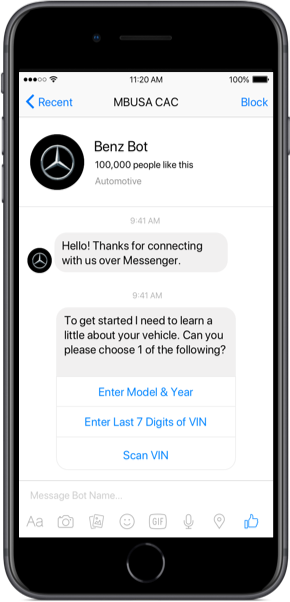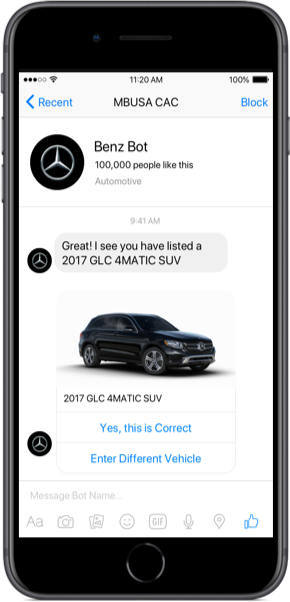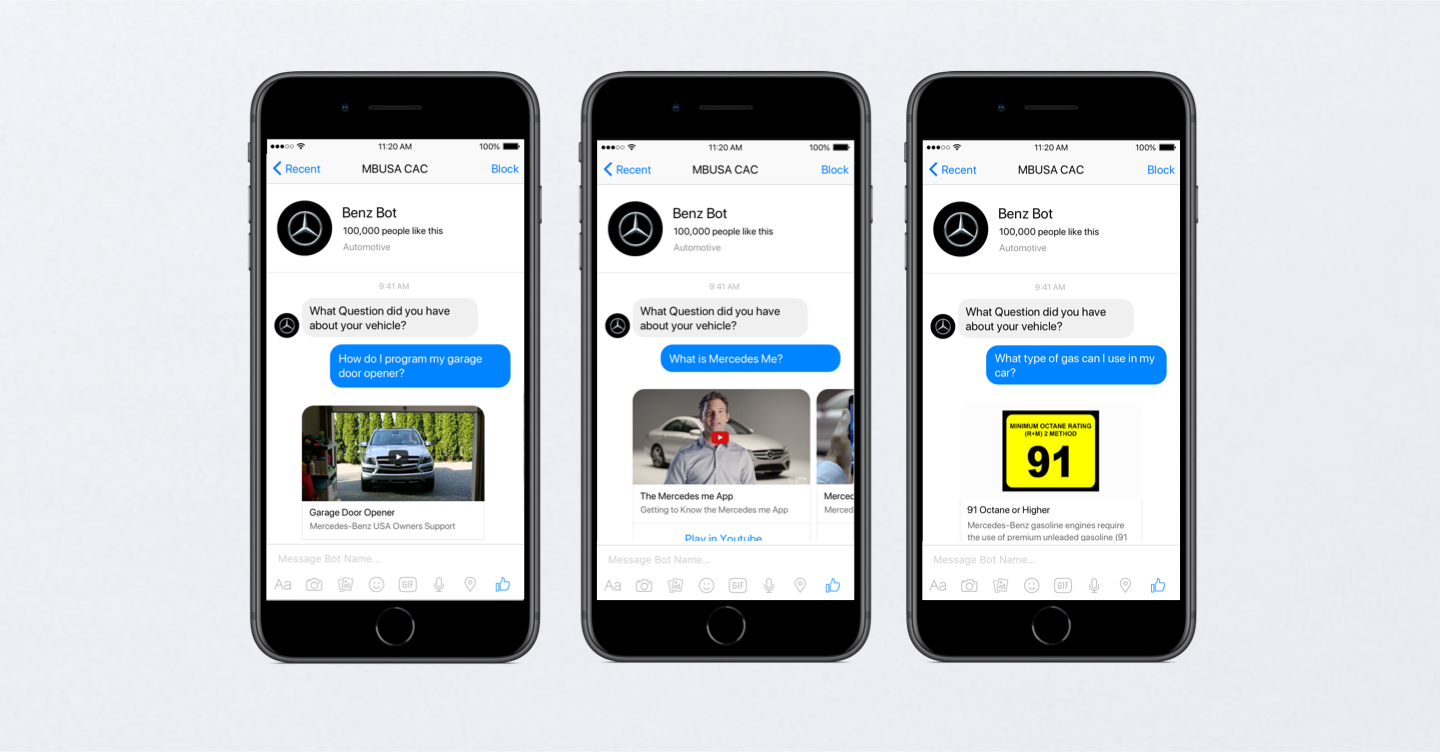Facebook Customer Assistance Chatbot
Help customers resolve top issues with their vehicles via Facebook chatbot app.

The Problem
Customers call the Customer Assistance Center (CAC) with similar questions each day and advisors spend valuable time giving the same responses over and over again. The CAC was looking for new ways to answer the top 20 customer questions without the need for personal interaction, which would would free up the advisors to address more complicated issues.
Users & Audience
The target audience for this app is the average Mercedes-Benz customer with little to no knowledge of their vehicle.
Team & Role
I was the lead UI/UX designer on this project working with CAC leadership for insight into the regularly occurring customer issues they encounter. I developed wireframes based on the most frequently recurring customer issues and created a UI based on Facebook’s guidelines for implementing a chatbot within their ecosystem.
Design Process
My team conferred with the CAC and researched the top issues they encounter to determine which of those could be answered in a chatbot environment. I then created a set of cards based on user input that would answer a majority of the customer’s top questions. We validated these initial designs among our internal teams and with outside user testing.
User Interface Design
The interface was designed to be simple and intuitive and based on Facebook’s guidelines for chatbots. Cards were utilized to convey small but important sets of information to the user in a easily digestible format to be accessed on their phone.

Welcome Screen
Through casual conversation the bot welcomes the user and asks them to get started by entering vehicle information through one of three methods.

Vehicle Identification
After the bot recognizes the vehicle, the user then confirms the selection so the bot can pull vehicle specific information when the user asks a question.

Analysis Result
The bot will analyze the question and recommend an appropriate answer. The user will then have the option to review the card details with the proposed response.
Outcome
The prototype was well received within our internal teams and seemed to solve a majority of user needs. Despite an overwhelmingly positive response, the ultimate decision was made not to proceed with the project. However, the exercise helped my team develop a better sense of conversational user experience and of how to fulfill customer needs beyond the scope of conventional experiences used in the past.